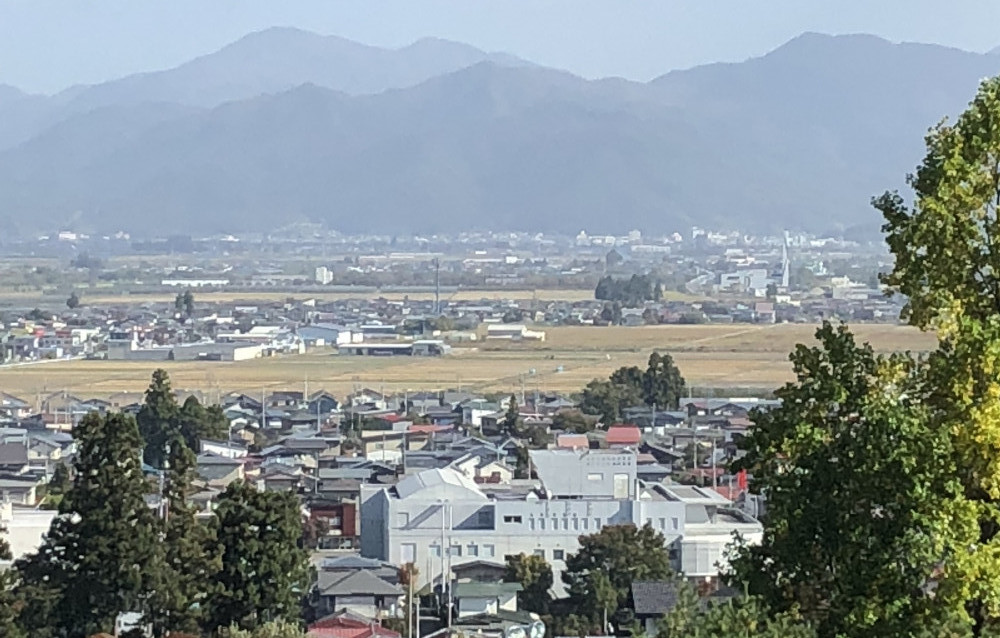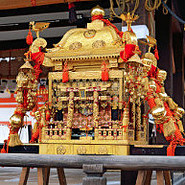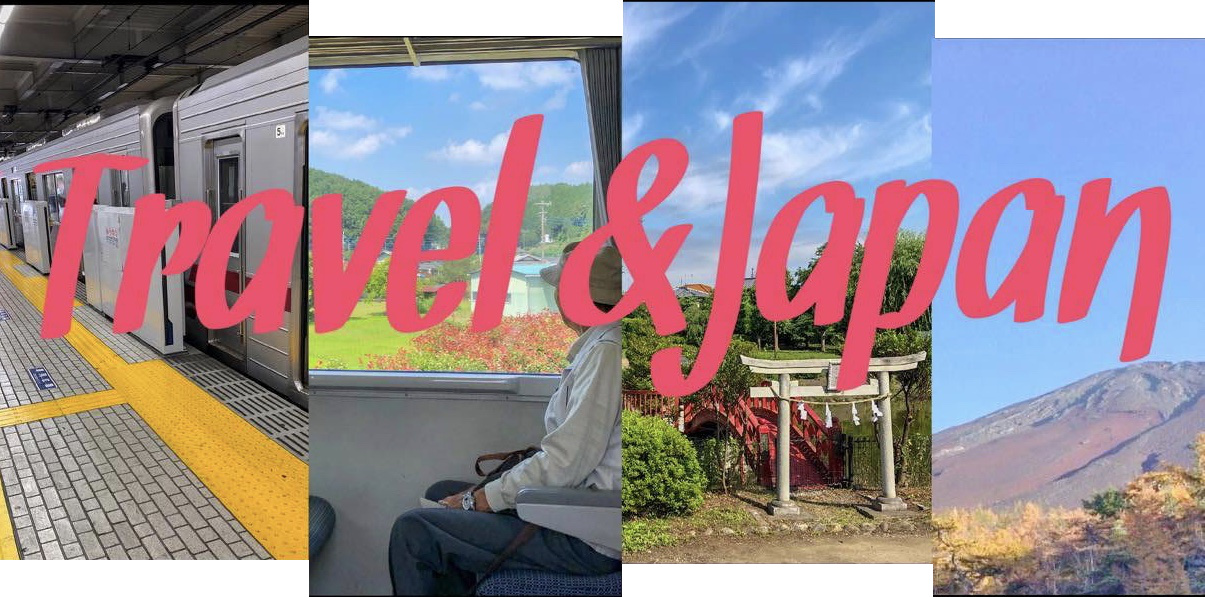Matsuri (Japanese Cultural Festival) happens throughout the year in Japan. Omikoshi Matsuri happens depending on when the shrine has it scheduled. Hundreds and sometimes thousands of people volunteer to take part in this annual event.
It’s an exciting festival and people often travel from all over the area to attend. I attended the Sagae Festival when I lived there and the city was packed with people. The energy and vivid colors of the festival had everyone enjoying themselves. There were several venues serving food and drink. I met several Japanese people and enjoyed the festivities with them.
Sagae

Sagae (established April 1, 1889) in the Yamagata prefecture was home to me for 6 beautiful months before I moved to Saitama. It’s the first time I’ve lived where each day you wake up, look out the window, and see beautiful mountain ranges. Hot and humid in the summer and cold with snow in the winter.
Sagae is an agricultural community where rice is grown in fields within the city. Fruit, especially cherries are grown everywhere. There are several cherry plantations in Sagae and the cherry symbol is displayed proudly everywhere. You can even see cherry groves on the side of the mountains while riding the bullet train to Yamagata.
Omikoshi
An Omikoshi or Mikoshi (without honorific) is a portable Shinto shrine. It’s used to move a deity (Kami) from the main shrine, through the city, to the celebration area, then back to the shrine. The Mikoshi are different shapes and there are usually 2, 4, or 6 poles used to carry them. The Mikoshi is often lavishly decorated usually hand-carved and is gold. Although, I have seen simple ones that are very plain. It depends on the deity that is represented.
Practice
Fortunately, I lived right across the street from an Omikoshi practice area. Practice lasted for two weeks. People would start collecting around 5 p.m. and over the next two hours the whole team would arrive. The practice would start a little after 7 p.m. and continue until 9 p.m.
At first, the practices were just meetings to discuss what was involved and to assign each member a role. The last few weeks involved the Mikoshi and how to pick it up, turn, movement while walking (a kind of dance), and weight training. They even had people standing on the poles of the Mikoshi adding extra weight.
By the end of the training, everyone knew what they were doing and everything was smooth and in sync. They were ready for the Omikoshi Festival.
See my video of Omikoshi practice here on the Travel and Japan YouTube channel.
Festival
People who carry the Mikoshi wear traditional clothing, chant, and dance in sync. There are usually several people leading the chant by taping Claves (round wooden blocks) together or blow on a whistle. 4 to 6 people are making sure the Mikoshi is going in the correct direction. They grab the poles and push back to slow everyone down or pull hard in a direction to turn them.
Children also take part and are usually in front of and behind, sometimes with one parent. This is the next generation who will keep the tradition moving forward. Lastly, some attendants provide water for everyone. Different areas of Japan have different people performing different roles.
The Mikoshi is taken from the shrine area where the deity is picked up and is taken around town (usually where worshippers of that Shrine live) then it’s taken to the staging area that leads to the main shrine.
You can see in two of the Travel and Japan YouTube videos here and here of the detiy showing respect to Hachiman.
At the Sagae Hachiman shrine, each Mikoshi will turn into the road leading to the Hachiman shrine. This is to pay respect to Hachiman. After this, the Mikoshi is turned again to continue onto the Celebration area. After each Kami has visited the Hachiman shrine it’s time for the Hachiman’s Mikoshi to come forth.
Sagae Hachiman Shrine
Hachiman is the Kami of warriors, divination, and culture. Also known as the protector of Japan. Hachiman’s shrine sets on top of a large hill. It’s a beautiful and peaceful place especially in the springtime when cherry blossoms are in bloom.
Hachiman’s Mikoshi starts down the path and stops at the road entrance to the shrine. Dancers present long poles with different tops. Each dancer’s dance and shout is different and is important to clear the way for the Mikoshi. Watch the dancers here on the Travel and Japan YouTube channel.
A few minutes after the dancers have started Hachiman’s Mikoshi comes out into the street and starts the journey toward the celebration area. The even is very different from all the other Mikoshi. There is much more energy and chanting associated with Hachiman.
You can see the start of the Saga Hachiman shrine Mikoshi here on the Travel and Japan YouTube channel.
I was impressed with this display. I’d never seen anything like this and since there were very few tourists watching the event felt genuine instead of for show.
Celebration Area
The celebration area is a large city square. One road coming into the area has all the venues. Games, food, and drinks including alcoholic beverages, In Japan a person can drink in public.
The area in the middle of the square is filled with spectators. As each Mikoshi approaches the crowd parts and allows the Mikoshi inside where the deity is welcomed by all.
Each Mikoshi is carried back and forth several times and raised up and down as the crowd cheers and chants. This is done to get the deity involved with the festival. When the celebration has finished the Mikoshi is carried back to the deities shrine. The deity is placed back into their home shrine for another year. Check out a crowds perspective here on Travel and Japan YouTube channel.
The whole celebration lasts late into the night.
Have you attended an Omikoshi Matsuri in Japan? Have you carried the Matsuri? Please share your experience in the comments section below.
Do you have any questions about Matsuri? Please ask them in the comments section below.


I love going to festivals anywhere in the world! Nice article.
Mel
Indeed, festivals are just fun. I’m glad you enjoyed the article.
Michael
I enjoy watching the matsuri in sagae.
Glad you enjoy it!
Michael